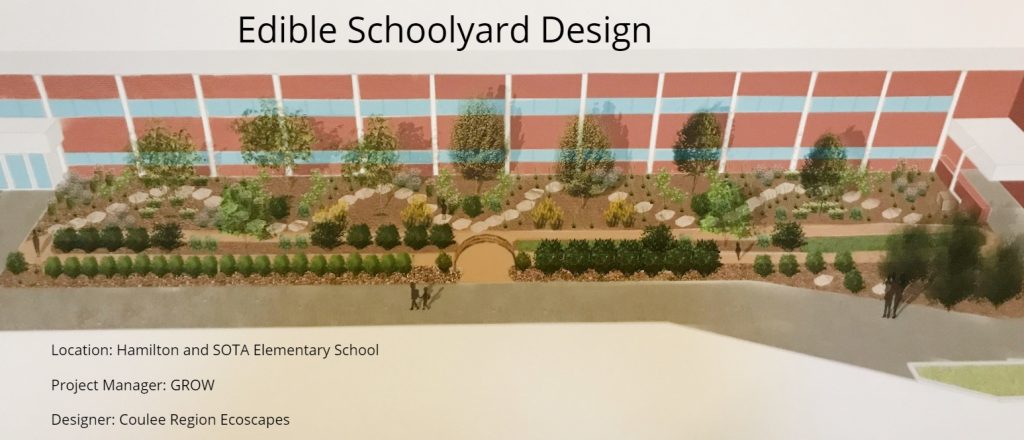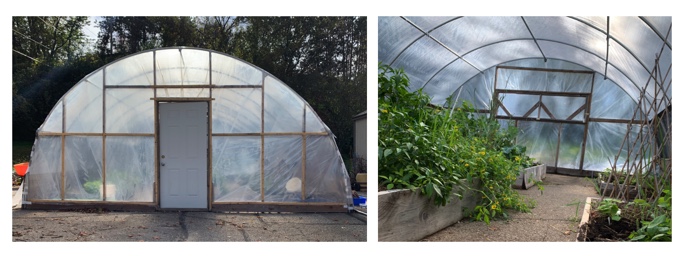Edible Schoolyard Project
What is an edible schoolyard? What’s its importance?

An edible schoolyard is a space that is created intentionally to provide a hands-on learning environment incorporating native edible plants.
This space mimics a forest edge. Picture fruiting trees, edible shrubs, pollinator plants, soil-enriching plants, an asparagus area, raspberry patch, willow arch, educational signs, and seating area.
We have seen that GROW gardens improve nutrition and movement. Also, we often have students do mindfulness exercises in our spaces at the beginning of our lessons. This edible schoolyard also can be used as a soft landing for children as they enter the school. As the edible schoolyard progresses, the students will be more and more invested as they have helped plan, plant, tend, harvest and care for this space.
Students will experience growing, harvesting, preparing, and sharing food while gaining knowledge of food and its systems, improving students’ food choices, and connecting students to the land, the environment, and their community. GROW will lead lessons for students and staff to help familiarize them with this space.
The students of Hamilton Early Learning Center and School of Technology and Arts will benefit from this edible schoolyard as it will provide an educational platform for hands-on learning regarding fresh, local food and nature. Other schools will be able to check out this pilot program to see if it is something they would like at their school.
A meta-analysis of 143 studies found that green space in neighborhoods helps enhance human health, including reduced risk of type II diabetes, heart disease, and preterm birth (Twohig-Bennett, 2018). The neighborhood will also be encouraged to get involved through harvesting and volunteering.
Edible Schoolyard Design

The edible schoolyard will have five sections:
- NW Pollinator Garden (Section #1): Starting from the north, there is a section right on the corner of the school property which is a low-growth pollinator garden. Students from 4th and 5th grade classes learned about pollinators, and then they helped design and install this space.
- Rain Garden (Section #2): This rain garden section will be slated in order to help reduce rainwater runoff.
- North Food Forest Space (Section #3): The space up against the building which will be planted with small fruit trees and pollinators.
- Large Food Forest Space (Section #4): The larger front, central space will incorporate fruit trees, shrubs, pollinator plants, a willow arch, asparagus patch, and raspberry patch.
- Outdoor Classroom and South Food Forest Space (Section #5): The south side patch will include the outdoor classroom space: a maple tree, edible shrubs, and pollinator plants.
A special thank you to the School District of La Crosse for your support of this project.
Thank you Hoop House Volunteers
We want to thank all of our volunteers to help finish the hoop house at State Road Elementary. With the completion, the plants within will be able to continue to flourish.
On Tuesday, October 22nd, students from Western Technical College volunteered their time and effort to help with the finishing touches.



